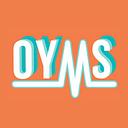STEM Mentorship, Research, and Competitions
How to get involved in STEM opportunities through the STEM Fellowship
It can be incredibly hard to find and choose opportunities throughout the summer and the school year that suit your interests. But if you’re interested in science, especially research and science communication, the STEM Fellowship has lots of great programs for you to participate in! Let’s dive in and learn about what they offer.
Mentorship Programs
A great way to spend your time during the summer is by participating in mentorship programs. Talking to someone who has a similar career or trajectory as what you’d like to achieve in the future can teach you countless new things; plus, it can help grow your network!
Luckily, the STEM Fellowship has multiple mentorship programs for students interested in STEM.
First up is PowerUp, a program meant for students who’d like to pursue life or health sciences in university. You’ll get to chat virtually with a university mentor during one session and ask for any university-related advice you’d like.
On top of that, if you’re a university student yourself who’d like to help high schoolers, you can volunteer to be a mentor! Though the applications listed on the STEM Fellowship website are outdated, we recommend reaching out to their team to see if the program is running this year as well.
The next mentorship program, the STEMpowerment Mentorship Program, is more long-term and is available to students passionate about any STEM topic including life sciences, computer science, and engineering. The program is also very flexible and will be suited to your needs. Interested in discussing your future career? You can do that! How about academic-focused goals? That too! Apply and learn more here.
What if you’re an undergraduate student looking to get advice from STEM professionals further along in their careers? There’s a program for you too, called STEMNet. Similar to the PowerUP program, you will get to talk to a “graduate student, researcher, professor, scientist, or software developer” once about their career, applications to graduate programs, general advice, and more. Apply and learn more here.
Lastly, there is the IMPulse program, which aims to provide mentorship to Indigenous youth transitioning from secondary to post-secondary education. There will be one-on-one as well as group mentorship sessions to guide students and offer advice about university, moving away from home and more.
This program is a partnership between the University of British Columbia and the STEM Fellowship. The application is once more outdated so we recommend emailing nadine.gerhardt@ubc.ca to learn more.
Research Exploration Program (REO)
The REO program combines mentorship, shadowing, and research opportunities all together to provide high school students with the chance to learn about what life as a researcher may look like.
With regard to mentorship, high school students will be paired with graduate students. They will then get to shadow their mentor, learn some basic research skills, tour university research labs, attend lab meetings, and attend scientific meetings.
The partner universities participating in this program include the University of Calgary, the University of Alberta, Queen’s University, the University of Toronto, the University of British Columbia, the University of Manitoba, and many more.
Though applications for the spring break iteration of the REO program have closed, there may be summer opportunities as well.
Learn more here and contact Agetha Mahendran (agetha.mahendran@stemfellowship.org) or Christine Ma (christine.ma@stemfellowship.org) to inquire about the summer REO program.
(We reached out to the University of Toronto St. George REO program and the University of Toronto Mississauga REO program to ask whether this program will be running during the summer, but did not receive a reply prior to the publication of this post).
Blogs and a Scientific Journal
Another great way to put your STEM skills to the test during the summer is to work on science communication — communicating various STEM topics in an easy-to-understand and fun way! The STEM Fellowship offers different ways to work on your communication skills.
The first way is through their blogs. Previous students have written about the physics behind Top Gun: Maverick, the science of sunscreen, time dilation and more. If you’d like to submit your own blog, you can get in touch with the STEM Fellowship team through their website.
As well, a great way to practice your communication skills is by writing for a scientific audience and publishing your work in a scientific journal. The STEM Fellowship Journal (SFJ) offers an opportunity for high school and university students to publish their work and get feedback. Learn more and submit here.
Competitions and Challenges
You can also gain experience writing scientific articles through the Scholarly Writing Challenge and SciComm Viewpoint Challenge. The Scholarly Writing Challenge is open to high school students in grades 10–12 worldwide the chance to publish their work and get feedback. Submissions can be original research, literature reviews, or any other type of scientific paper. This challenge is not currently open but likely will be again next year.
The SciComm Viewpoint Challenge offers a similar opportunity but this time for viewpoint papers, papers that express the author’s opinion while backing it up with scientific evidence. High school students will be paired with undergraduate and graduate mentors to get feedback on their work as well.
About the Author
Parmin Sedigh is a 17-year-old stem cell and science communications enthusiast as well as a student researcher, based in Kingston, ON. She’s currently the VP of Communications at Eye Hope Canada. You can usually find her on her computer following her curiosity. Connect with her on LinkedIn.
